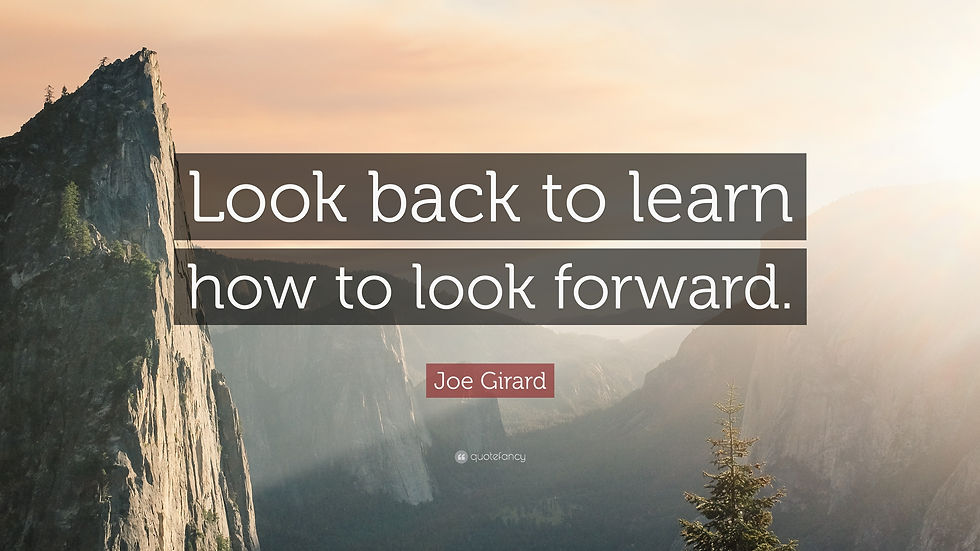Making Feedback Slick: The OILS Framework
- Anne Marie DeCarolis

- Feb 13, 2021
- 3 min read
Updated: Aug 11, 2024
Cards on the table - giving feedback is hard! Notably, receiving it is rarely a piece of cake either.
Why is providing feedback so challenging and intimidating? Let’s explore:
The giver cares about the feelings of the receiver
Providing feedback takes confidence
Navigating the conversation can be awkward
The receiver often objects or becomes emotional
The giver is unsure if he/she can substantiate the feedback sufficiently to make it objective and actionable
Among these varying “why’s,” many schools of thought also exist on “how” to provide feedback. One area where the stars align, however, is the innate human desire to be provided thoughtful, timely and productive feedback. The last thing any of us want is to go a lengthy period, such as a full performance cycle, doing something subpar. As the saying goes, “feedback is a gift.” I would assert that only good feedback is a gift and it is one we should regift, namely pay forward, when appropriate. Creating a culture of healthy, constructive feedback promotes growth and development.
The OILS Feedback Framework
Yes, many feedback models exist.
Yes, a skilled provider of feedback can organically craft the conversation.
Yes, an easy-to-use feedback model remains woefully needed. Otherwise, providing feedback would not remain such a challenge in the workplace.
The key to good feedback is not to let the quality of it slip and slide. Instead, keep it slick. The OILS Feedback Framework, popularized by McKinsey, enables consistent quality and offers a template and script which keeps conversations moving and action-oriented. OILS provides ease without the risk of putting grease on a pig…or should I say lipstick?
OILS stands for Observe, Impact, Listen and Suggest.* This technique can be used for conveying insights or critiques big and small, positive and negative. It marries both “what” (the observation) and “why” (the impact) and creates space for examples and conversation. This approach to providing feedback is valuable in direct reporting relationships, as well as in peer and cross functional arrangements.

Switching the S: Suggest vs State
Certain situations and workplace relationships merit closing the conversation with a suggestion. This is beneficial for peers and those seeking to influence without authority. Depending upon the context, suggestions can be offered from leader to direct report. In other situations, a suggestion is not appropriate. Instead, switch one S for another: State. Quite simply, close the conversation with a declarative statement. Short and sweet.
Check Your OILS

A few examples to consider:
I observed you blowing off steam in the presence of a new hire. The impact of this likely hurt his/her perception of the company. It also reflected unprofessionally on you. What are your thoughts? The next time you are stressed, be more aware of who is around. My door is always open.
I observed you deescalate a tough client conversation today. The impact of this was retaining the sale. Tell me more about it. Continue using those de-escalation techniques, and consider sharing them in the next team meeting.
I observed this group bickering over who left the dirty coffee cup in the sink…again. The impact of this is that it breaks down the team norms we all agreed upon and invested time in building. What do you think? Let’s all try to remember to clean up after ourselves going forward.
I observed you delivering constructive feedback. The impacts of this were fostering a sense of trust, solidifying your role as a supportive coach and establishing a continuous improvement mindset. What do you think? I suggest you continue to use the OILS Framework. (The unicorns made up this example. 😊)
To the Point
One final note about providing quality feedback, remember to get to the point. Providing a novel-length introduction or droning on mid-conversation can make both parties uncomfortable. Address the topic at hand and move forward.
A slick OILS Framework one-pager is available here.
*McKinsey has evolved the OILS Framework in recent years. The "S" is also defined as "solutions plus strategy."
Image sources:




Comments